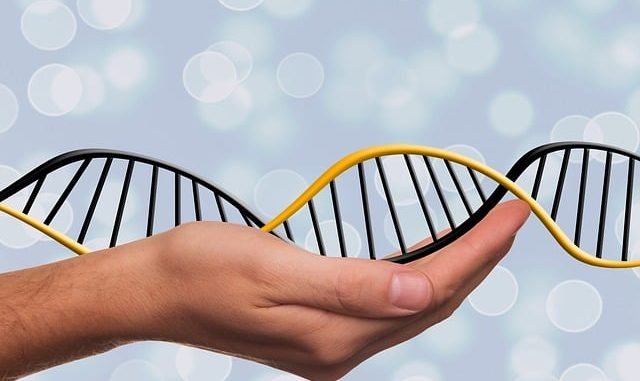
Reverse transcription is a biological process that converts RNA into DNA, specifically complementary DNA (cDNA). This process is catalyzed by the enzyme reverse transcriptase, which is a key component of retroviruses and some other retrotranscribing viruses.
The Process
Reverse Transcriptase
Reverse transcription is carried out by the enzyme reverse transcriptase. Reverse transcriptase is an RNA-dependent DNA polymerase that can synthesize DNA using an RNA template. It has two main activities: RNA-dependent DNA polymerase activity and RNase H activity.
RNA Template
Reverse transcription begins with an RNA molecule that serves as the template for cDNA synthesis. The RNA molecule can be viral RNA, messenger RNA (mRNA), or other RNA species.
Isolation of RNA
The first step in cDNA synthesis is the isolation of RNA from the biological sample of interest. This can be done using various RNA extraction methods, such as phenol-chloroform extraction or commercially available RNA extraction kits. The choice of method depends on the sample type and downstream applications.
RNA Denaturation
The isolated RNA is denatured by heating to disrupt the secondary structures and generate single-stranded RNA molecules. This is typically done by incubating the RNA sample at an elevated temperature (e.g., 65-70°C) for a short period.
Priming
Reverse transcription requires a primer, which provides a free 3′-OH group for DNA synthesis to initiate. The primer can be either a specific DNA primer or a primer-binding site present in the RNA molecule itself. Commonly, can be either oligo(dT) or random primers. Oligo(dT) primers specifically anneal to the poly(A) tail of mRNA molecules, whereas random primers bind nonspecifically to various regions of RNA molecules.
Reverse Transcriptase
A reverse transcriptase enzyme, typically derived from retroviruses, is used in the reverse transcription process. The enzyme synthesizes a complementary DNA strand (cDNA) using the RNA template and the primer.
Initiation
The reverse transcriptase enzyme recognizes the primer-binding site or the specific DNA primer and binds to it, positioning itself on the RNA template. The reverse transcriptase then starts synthesizing DNA using the RNA template as a guide.
DNA Synthesis
The reverse transcriptase extends the primer by adding deoxynucleotide triphosphates (dNTPs) complementary to the RNA template. These are added to the 3′ end of the primer and follow base pair rules. It catalyzes the formation of phosphodiester bonds between the newly added nucleotides, resulting in the synthesis of a single-stranded DNA molecule which is also the cDNA.
RNase H Activity
As the reverse transcriptase synthesizes DNA, it also possesses an associated RNase H activity. RNase H (and RNase A), is an endonuclease that specifically degrades the RNA template in the RNA-DNA hybrid molecule. It cleaves the RNA strand from the RNA-DNA hybrid, leaving behind a single-stranded DNA molecule (i.e. cDNA).
Second Strand Synthesis (Optional)
After degradation of the RNA template, the reverse transcriptase uses the newly synthesized single-stranded DNA molecule as a template to synthesize the complementary DNA strand. This results in the formation of a double-stranded DNA molecule.
Purification
The synthesized cDNA is typically purified using various methods to remove residual primers, enzymes, nucleotides, and other contaminants. Common purification techniques include ethanol precipitation, column purification, or magnetic bead-based purification kits.
The resulting double-stranded DNA molecule is known as cDNA because it is complementary to the original RNA template. Reverse transcription allows the conversion of RNA molecules, such as viral RNA or mRNA, into DNA molecules, enabling subsequent analysis, amplification, or manipulation of the genetic material.
Reverse transcription has several applications in molecular biology and biotechnology. It is commonly used in techniques such as reverse transcription polymerase chain reaction (RT-PCR) to amplify and study specific RNA molecules, including mRNA, microRNA, and viral RNA. Reverse transcription is also utilized in the generation of complementary DNA libraries and in the construction of recombinant DNA molecules for cloning and expression purposes.
Reverse transcription is a biological process catalyzed by reverse transcriptase that converts RNA into complementary DNA (cDNA). It involves the synthesis of a single-stranded DNA molecule using an RNA template, followed by degradation of the RNA template and synthesis of the complementary DNA strand, resulting in a double-stranded cDNA molecule.
Leave a Reply